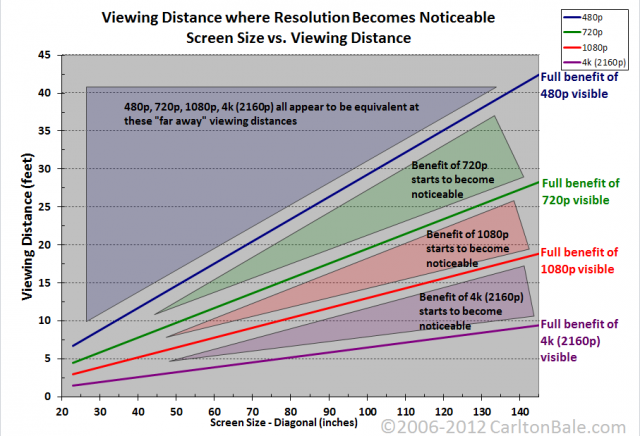4K TVs are coming, but they face an uphill battle in the home

Image via Ars Technica
"TV makers are at a bit of an impasse: for the first time ever, demand for LCD TVs is down year-over-year. After years of increasing sales and declining prices, the market is finally beginning to become saturated, and the incremental improvements and new features that the television companies have added since LCD TVs became mainstream—things like OLED lighting and 3D TVs—have either been well out of consumers' price ranges or too niche to attract a wide audience.
The TV industry is looking for that must-have feature that will get people with existing LCD TVs to upgrade their sets, and one of those features is the 4K resolution standard. While 4K TV sets are slowly making their way to the market, both the discussion panels and vendors at Consumer Electronics Week seem a bit unsure about the standard's prospects in the home
...
Carlton Bale has published an excellent chart and explanation that sums up 4K TV's problems in a nutshell: at some distances and screen sizes, even the difference between 720p and 1080p to the human eye can be negligible, and this is even more true of 4K. To get any benefit out of a 4K TV, you either need to have a very large screen (the benefits begin to become apparent—barely—at around 50 or 60 inches), be sitting very close, or both, and small differences like this might appeal to true home theater enthusiasts or videophiles, but it's going to be a hard sell for the average consumer." via Ars Technica
 Display Alliance
Display Alliance
Reader Comments